This green papaya salad is a great warm-weather dish with its crunchy, cool papaya, plenty of fresh herbs, shrimp, and pork. In fact, the first time I had this dish was at a quiet, riverside hut with my cousin in Vietnam. We were at a daytime retreat center just about a half hour outside of the city. Each hut came with a beautiful view, a table, chairs, and the best part, hammocks! They had a full menu, so you could order everything from an entire hotpot meal to fresh coconut waters. We picked a few things off the menu and spent the day lounging and relaxing by the water. All the makings of a perfect, lazy summer afternoon.
My mom and I set out to recreate this simple dish back at her home in Portland, Oregon. It doesn’t require any fancy ingredients, so it was a cinch to put together. The only thing you may need to hunt down is a green papaya. These should be available at any Southeast Asian supermarket or even at a Chinese grocery store. While you’re there, be sure to pick up some shrimp chips too. I prefer the long, rectangular ones that my mom brings back for me from Vietnam (for maximum load), but you can use the little, round ones that are available at any Asian grocery store too.
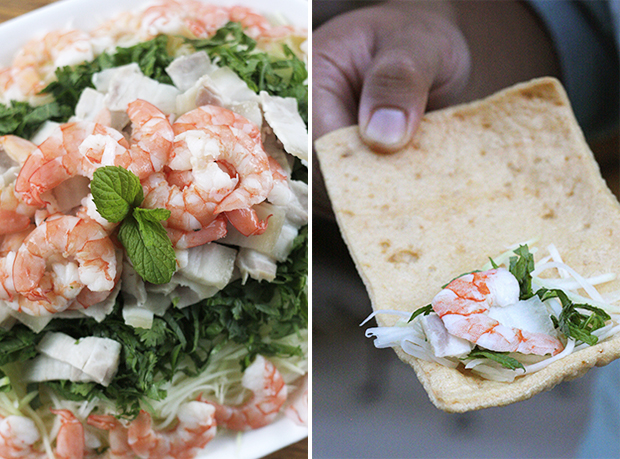 Vietnamese Green Papaya Salad with Shrimp and Pork Belly
Vietnamese Green Papaya Salad with Shrimp and Pork Belly
Serves 6-8 as an appetizer, 4 as a light meal
1 large green papaya, shredded (about 6-8 cups)
1 bunch thai basil
1 bunch mint leaves
1/2 bunch cilantro
1 /2 lb. medium or large shrimp
1/2 lb. pork belly
nuoc cham dressing
crushed peanuts
fried shallots
shrimp chips
1. Wash and peel the papaya with a vegetable peeler. Cut in half and remove the seeds inside. Julienne the papaya with a knife, or use a mandoline or julienne peeler to get thin strips. I find that the julienne peeler is the best tool for this job since it is quick, easy, and produces the perfect thin-yet–still-wide-enough-to-be-crunchy papaya strips.
2. Boil the shrimp for a minute or two until just cooked. Â After the shrimp have cooled, lay them flat and slice through them horizontally (butterfly them). This should produce two pieces of shrimp that make for a more attractive salad and an easier bite to eat!
3. Steam the pork belly in a small pot with about 1/2″ inch of water or in a steamer until just cooked. Let it cool and then slice thinly.
4. Wash and dry the thai basil, mint, and cilantro. Next, you’re going to chiffonade all the herbs by picking off all the leaves, stacking them, rolling them up, and slicing into thin strips.
5. Time to fry those shrimp chips! See directions here for frying.
6. Finally, assemble the papaya, herbs, shrimp, and pork together. You can either mix them up or layer them like I did for a more attractive presentation. Sprinkle the crushed peanuts and fried shallots (I forgot them in these pics) on top and serve with nuoc cham dressing. You can always dress the salad and mix it all up for your guests, but you’ll have to finish the whole salad in one sitting. If you think you’ll have leftovers, I’d suggest serving the dressing on the side.

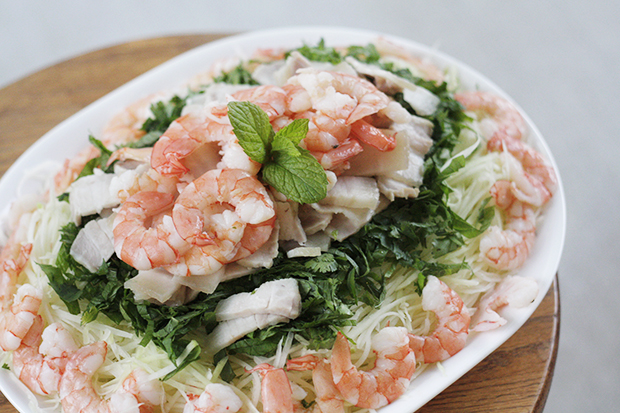

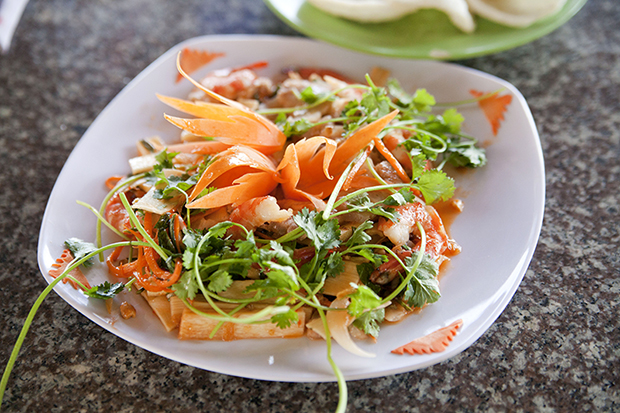
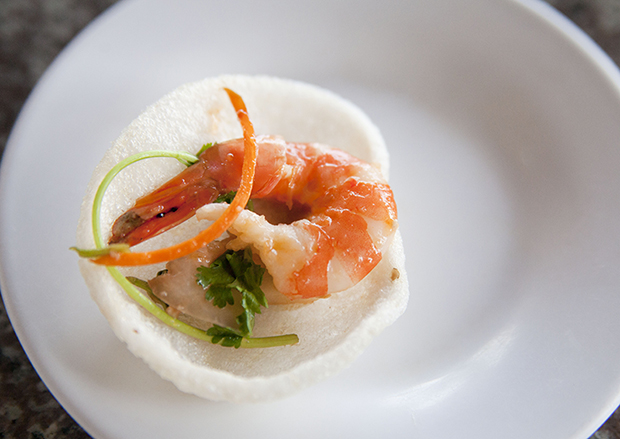
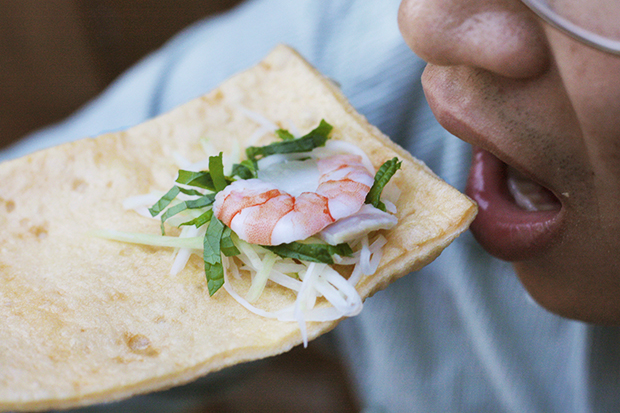







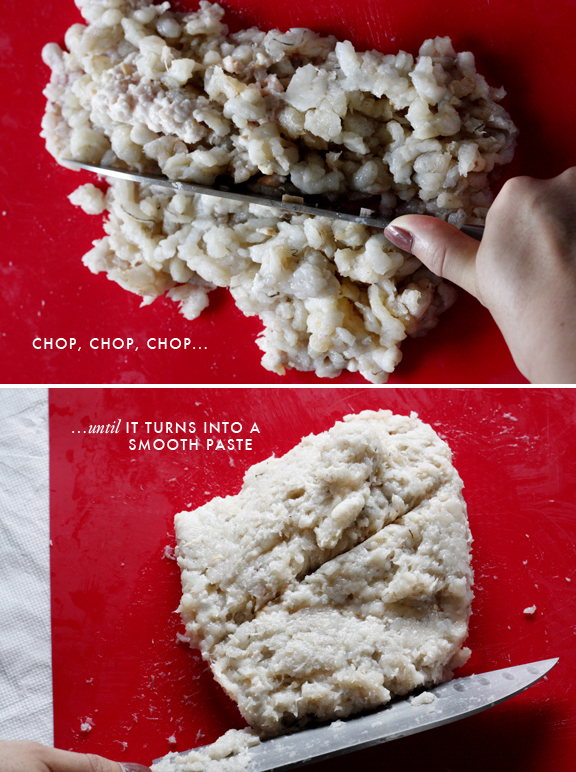















Connect with us